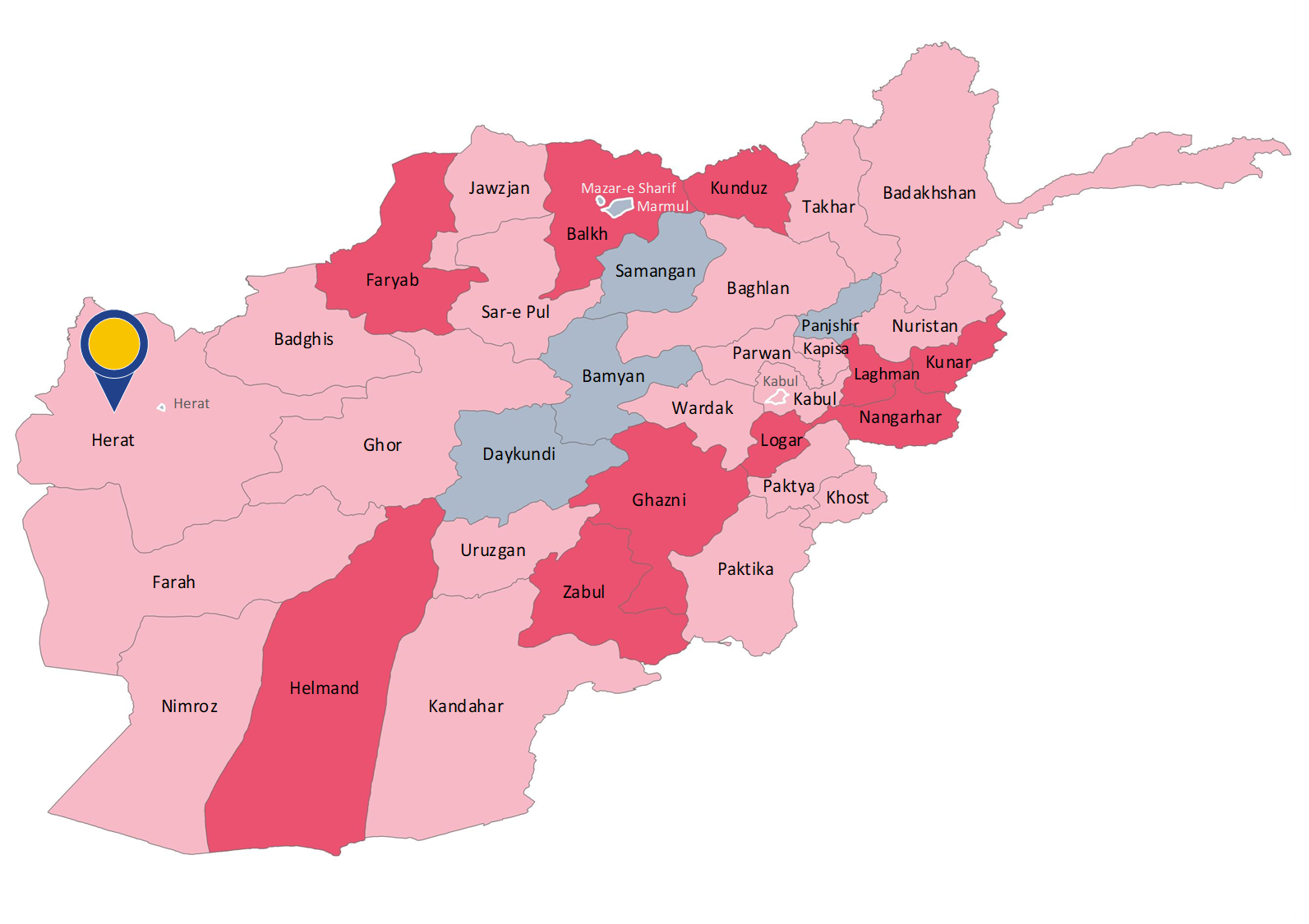|
⚠ |
|
Please note that this country guidance document has been replaced by a more recent one. The latest versions of country guidance documents are available at /country-guidance. |
The province of Herat has a population of approximately 2 141 000. The main ethnic groups in the province are Pashtuns, Tajiks and Hazaras. It is located in the west of Afghanistan and is divided in 20 districts, including four temporary districts. Herat borders Badghis, Ghor, and Farah, and shares international borders with Iran and Turkmenistan. The provincial capital of Herat is Herat City. The province is connected to other major cities by the Ring Road and can be reached by Herat International Airport.

According to LWJ, seven of the districts of Herat were contested, while one district (Farsi) was categorised as ‘unconfirmable Taliban claim of control’.
It is reported that Herat has been among the relatively calm provinces in the west of Afghanistan, but some districts are contested or controlled by Taliban militants. According to sources, the government controls all district centres.
ISKP presence is not mentioned in the province.
ACLED collected data on 529 violent events in the period from 1 March 2019 to 30 June 2020 (average of 7.6 incidents per week), of which 360 were coded as ‘battles’, 141 as ‘explosions/remote violence’, and 28 as ‘violence against civilians’.
Examples of incidents include the killing of civilians through roadside bombs and attacks on government outposts and security forces. Civilian casualties have also been reported in relation to airstrikes targeting key Taliban members, for example in Shindand district.
Further impact on the civilian population included, for example, district roads being reported as unsafe because of armed robbers.
UNAMA documented 400 civilian casualties (144 death and 256 injured) in 2019, representing 19 civilian victims per 100 000 inhabitants. This was an increase of 54 % compared to 2018. The leading cause for the civilian casualties were non-suicide IEDs, ground engagements, and targeted/deliberate killings.
RS ranked Herat in the category of provinces where the number of civilian casualties was between 51 and 75 for the first quarter of 2020, and between 101 and 125 during the second quarter.
In the period 1 March 2019 – 30 June 2020, 3 761 persons were displaced from the province of Herat, almost all of them within the province itself. In the same period, more than 5 000 people from other provinces were internally displaced in the province of Herat, mainly coming from Badghis.
|
|
Looking at the indicators, it can be concluded that indiscriminate violence is taking place in the province of Herat, however not at a high level and, accordingly, a higher level of individual elements is required in order to show substantial grounds for believing that a civilian, returned to the territory, would face a real risk of serious harm within the meaning of Article 15(c) QD.
|
|
|
In the provincial capital of Herat City, indiscriminate violence is taking place at such a low level that in general there is no real risk for a civilian to be personally affected by reason of indiscriminate violence within the meaning of Article 15(c) QD. However, individual elements always need to be taken into account as they could put the applicant in risk-enhancing situations.
|
